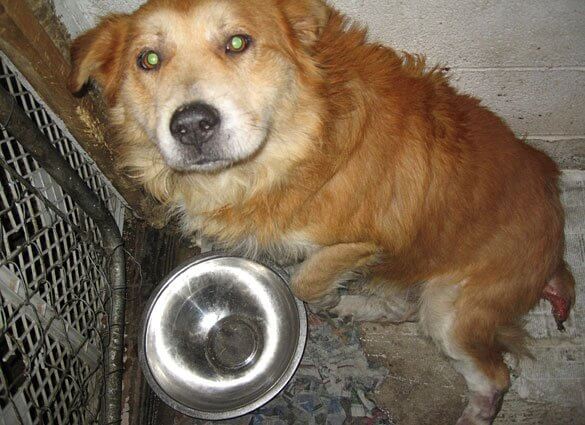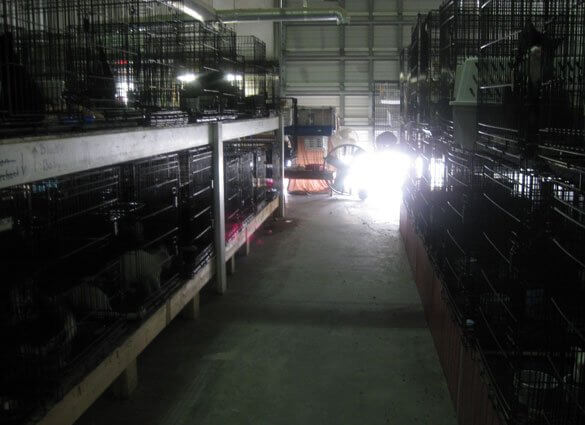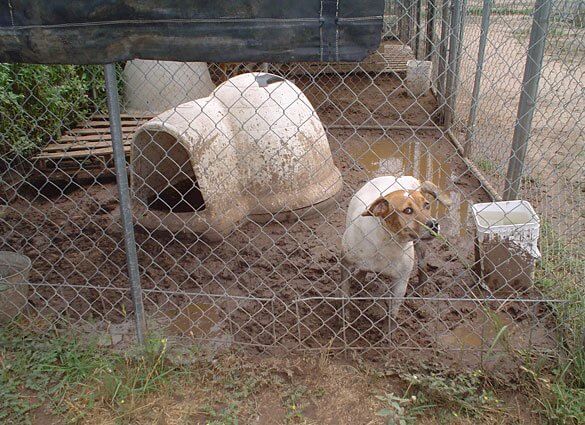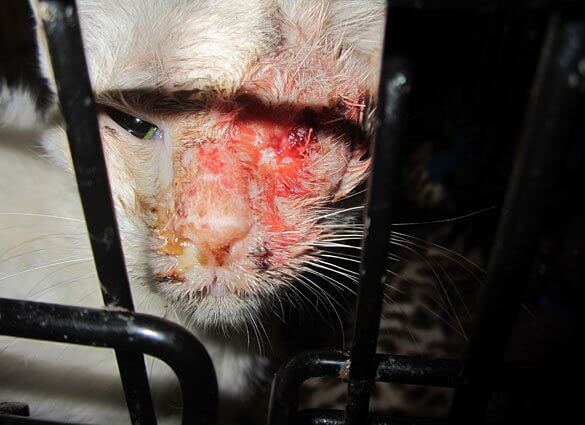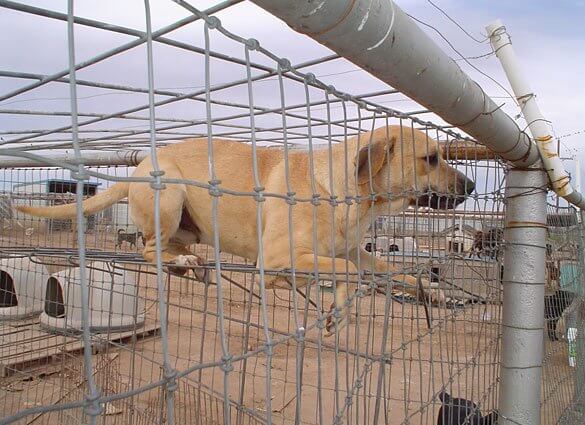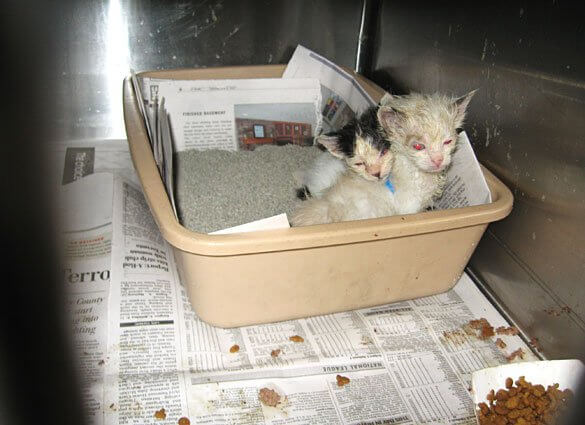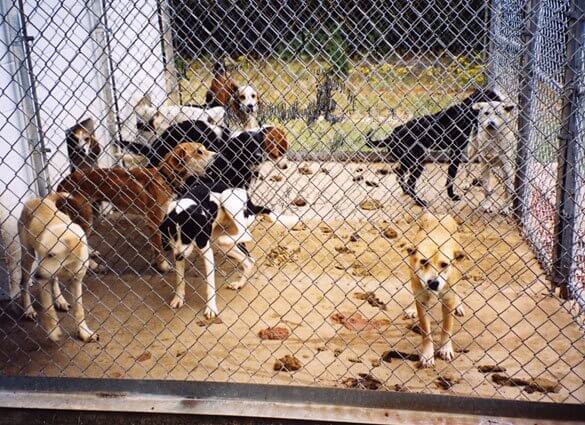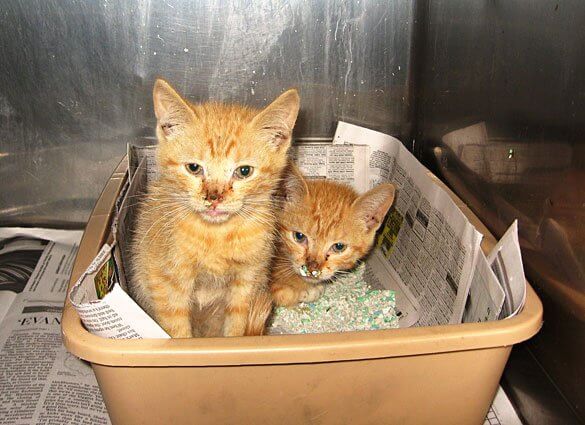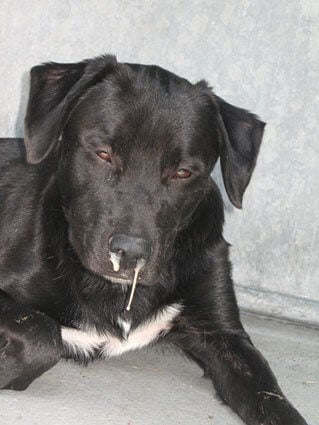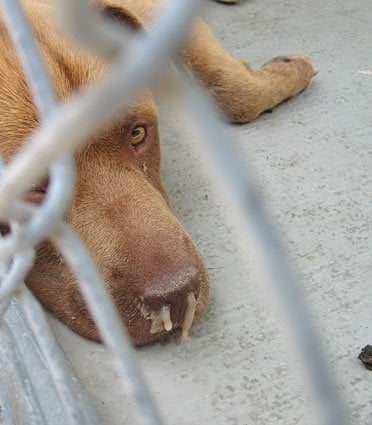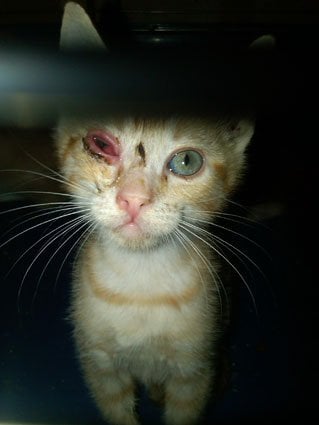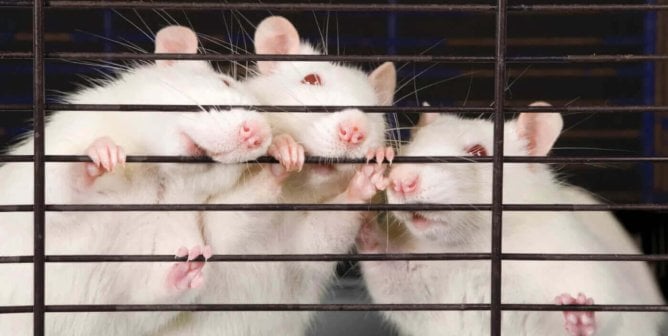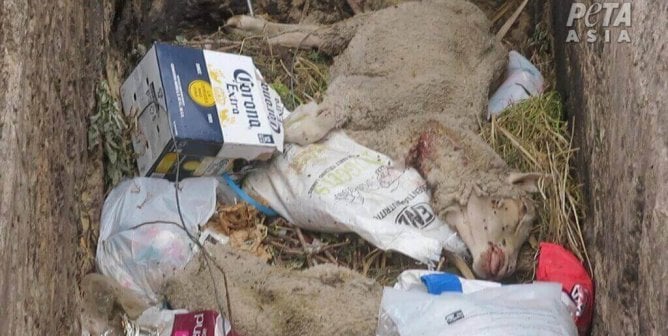‘No-Kill’ Policies Slowly Killing Animals 2012
When “no-kill” animal shelters and rescue groups are filled to capacity, which is almost always, they are left with two options: turn away more animals than they take in or warehouse animals, often in substandard, filthy, and severely crowded conditions, for weeks, months, or even years on end. Most, if not all, of the animals who are turned away from such facilities still face untimely deaths—just not at these facilities.
Instead they are cruelly killed by people who don’t want them, are dumped on roadsides and left to die from starvation or being hit by a car, or spend their short lives homeless, unwanted, and producing more litters of animals for whom no homes exist.
The lucky ones are taken to well-run open-admission animal shelters, where they either find a well-screened, permanent home or are painlessly euthanized in the arms of professionally trained, compassionate people. Here are some of the “no-kill” animal shelter failures that made headlines in recent years for making animals suffer a fate far worse than a kind death.
Reports Showing How ‘No-Kill’ Policies Harmed Animals in December 2012
Fort Worth, Texas
After 91 sick and neglected cats were found crammed into a trailer belonging to an “overwhelmed cat rescue,” a Fort Worth Animal Control official told WFAA.com that it “would take a lot more staff than we have right now to do monthly, quarterly, whatever checks” on “rescue” groups to which the city releases animals. In an effort to increase the city’s “live release rate,” the shelter had been releasing animals to the “rescue,” where Humane Society of Northern Texas investigators found the “extremely thin” and sick animals living amid feces.
Reports Showing How ‘No-Kill’ Policies Harmed Animals in November 2012
Andalusia, Alabama
The Andalusia Star News reported that Sharlotte Marie Adams, the operator of Animal Aid and Rescue Resources, Inc., was arrested for fraud after setting up a Facebook page and making urgent pleas for funding for veterinary care and needed supplies. More than $25,000 in cash donations was reportedly used to pay for personal expenses. Police found 26 animals in criminally cruel conditions at the home. None had reportedly seen a veterinarian, and many had severe infections and illnesses.
Mercer County, West Virginia
The Bluefield Daily Telegraph reported that the publicly funded Mercer County Animal Shelter is refusing to accept animals when the shelter is full. The shelter director told the paper, “What we’re doing is this — we are not accepting them if we don’t have space.”
Georgetown, Texas
The Austin American-Statesman reported that two years after becoming a “no-kill” facility, the Williamson County Regional Animal Shelter’s intake “has increased by 500 to 600 animals a year.” The shelter “is so full that it doubles up dogs in its 79 kennels.” A shelter official told the paper that there has been an increase in the number of strays and animals surrendered by owners. The number of surrendered animals increased 64 percent from 2010 to 2012.
DeLand, Florida
City Attorney Darren Elkind described the Animal Rescue Konsortium (ARK) to a courtroom as “not a no kill shelter — it is a slow kill shelter.” On November 8, officials raided the ARK facility and removed nearly 130 cats and dogs who were reportedly housed in poor conditions. Veterinarians testified that numerous cats were suffering from upper respiratory infections, and the court heard “testimony of maggots found in water dishes, eight overflowing litter pans for 27 cats in one upstairs rooms [sic] and other problems such as no food or water readily evident.” An agreement forbids the group from using the home to house animals in the future.
Williams Township, Pennsylvania
The Morning Call reported that the “consistently high population at the [community’s] no-kill shelter has pushed it to mostly close its doors to new animals.” The local shelter, Center for Animal Health and Welfare, ended contracts to house animals for local municipalities despite the continued and urgent need. Wendy Benedict, president of the center’s board of directors, told the paper that “the center has seen a rise in abandoned animals and often finds dumped dogs tied to its fence or kittens stuffed in a crate on its doorstep.” Despite the rise in abandonments, another board member, Dan Roman, said that until the number of animals at the shelter declines, “Don’t bring your dog here.”
Muncie, Indiana
Muncie’s ABC website reported that more than five dozen dogs were removed by officials in a raid on Adopt A Lab animal rescue where “they were found living in filth.” The dozens of dogs were reportedly crammed into a single-story ranch-style house, “which was covered in urine and feces.”
Ingham County, Michigan
Like all open-admission animal shelters, the Ingham County Animal Control and Shelter does not have the option of turning its back on an animal in need. The shelter’s director explained to WILX news that “we don’t have the luxury of saying, ‘No, we’re full, you’ll have to come back later on.’ We have to accept the animal. We’re getting hit by shelters around us that are closed admission.”
Reports Showing How ‘No-Kill’ Policies Harmed Animals in October 2012
Los Angeles, California
After visiting one of Los Angeles Animal Services’ shelters (which have been under attack and pressure by “no-kill” proponents for years), a Los Angeles Times reporter described severe crowding, including, “pit bulls with weary eyes and wagging tails, crammed three and four to a cage” and the need for emergency veterinary care for a German shepherd “being treated for ugly neck wounds from an attack by kennel-mates, a scenario that is becoming all too common as shelter crowding rises.”
Bibb County, Georgia
The Telegraph reported that a 100-plus–page evaluation of the Bibb County Animal Welfare shelter found that “under a former interim director when the shelter was under oversight of the city of Macon, emphasis was placed on low-kill or no-kill shelter operations.” The report said that this “led to overcrowded conditions in the facility.” The report condemned the shelter for poor and inaccurate recordkeeping and, according to the newspaper, stated that “an unidentified former employee directed staff not to document litters of puppies and kittens in case they were euthanized. … [T]hey were only put into the computer system if the animals were adopted. The same former employee directed other shelter workers to release feral cats through a hole in the fence adjoining the landfill.”
Blount County, Tennessee
The Daily Times reported that “after the Blount County Society for the Prevention of Cruelty to Animals [BCSPCA] investigated complaints of noise and animals running loose” at Double A Pit Bull Rescue and found dogs confined without food or water, the owner of the “rescue” surrendered 14 dogs, four of whom had been removed from the county animal shelter with the belief that they would be placed into permanent homes. The rescue’s founder Angela Burruss said, “I accept my part in it. I was not fully prepared. I was not ready for the onslaught of need. I hadn’t braced myself for the overwhelming needs of the animals.” BCSPCA President Gino Bachman said of the animals, “There was no food, no water, and they were in a confined area. … She put the cart before the horse and took on more animals than she had resources for and she couldn’t handle it.”
Longview, Washington
A pit bull allegedly bit his owner after the man hit him for eating a box of doughnuts. The next day the man beat the dog to death with a sledgehammer. He reportedly told the community’s animal control supervisor that he didn’t take the dog to the local humane society instead because he couldn’t afford the shelter’s fees. A humane society representative told a PETA caseworker that the shelter requires an appointment to accept any animal and that a fee of $105 would be charged for it to accept a 55-pound dog for euthanasia because of aggression.
Lancaster, Pennsylvania
After an announcement by the Humane League of Lancaster County that it decided to become a “no-kill” shelter, 44 municipal contracts were ended. Tom Hickey, a member of the state Dog Law Advisory Board, told The Inquirer, “When people hear no kill, they think it’s a good thing, it’s not a good thing. … They are selectively picking which dogs live. Where are the dogs that don’t fit the criteria, namely pit bulls and puppy mill survivors that need extensive rehabilitation, going to go?”
Pasadena, Maryland
The Maryland Gazette reported that a man claiming to operate an animal rescue out of his home was charged with 134 counts of cruelty to animals after a September 27 raid by officials who found sick and dead animals at the property. The man said that he was “well-connected among the region’s animal shelters and would receive calls from rescue facilities filled to capacity.”
Austin, Texas
The foster coordinator at Austin Animal Services sent an urgent e-mail reporting that “as we get ‘full’ we are ‘buddying’ up big dogs. We are putting ‘temporary’ housing up in the cat building to hold more cats. That is literally HUNDREDS of animals that [are] in places that they simply shouldn’t be. We are having yet another huge over population issue this week, perhaps the worst we have seen in the year we have now been on Levander Loop. Our largest partners, Austin Pets Alive and the Austin Humane Society are full.”
Reports Showing How ‘No-Kill’ Policies Harmed Animals in September 2012
Bangor, Maine
In an attempt to reduce euthanasia at the Bangor Humane Society, the shelter reportedly “stop[s] accepting surrendered animals for brief periods.” Shelter staffers reported that the previous week, they had to ask a woman with a “boxful of cats and kittens” she wanted to surrender to wait until they had space. The woman reportedly “yelled and screamed at the staff.” The executive director said that when the shelter staffers have to turn people away, they “pray the person will hold on to that animal for a few more days until space opens up. We pray that they won’t choose to leave the animal on the side of the road, or worse. We try to do our best to assure them it will be for just a day or a few days and then we hope for the best. But in truth our hearts sink when they walk out.”
Fort Worth, Texas
In a news report, Fort Worth’s code compliance officer stated that citizens will “dump [animals] regardless” of the animal shelter’s new policy to refuse to accept unwanted animals from their owners in a move to become a so-called “no-kill” facility. The new policy was implemented even though nearly 3,500 animals were signed over by citizens unable or unwilling to care for them in the last fiscal year. Private area shelters and rescue groups report that they are ill-equipped and unprepared for the likely increase in calls and intakes that this will cause. Tammy Hawley, operations director of the Humane Society of North Texas, said that there’s no simple way to solve the problem of irresponsible pet owners. “The kind of people who typically give up animals to animal shelters are not always the most vested owners anyway.”
Corpus Christi, Texas
Area animal shelters report that they are filled to capacity and that homeless, roaming animals in the area are at “epidemic” levels. The shelter director at “no-kill” Pee Wee’s Pet Adoption World & Sanctuary stated, “I get 75 calls a day, and people get angry because I can’t take 75 animals a day. If you multiply 75 times 365 days a year, I would have to take in 27,000 plus animals a year.” The Gulf Coast Humane Society director reports that his shelter “turn[s] people away right and left.”
Reports Showing How ‘No-Kill’ Policies Harmed Animals in August 2012
Wilburton, Oklahoma
The owners of the Cajun Country Ranch animal “rescue” pleaded guilty to charges of animal abuse and child neglect and were sentenced to five years of probation after authorities found the floor of the couple’s home covered with feces and cockroaches. The couple’s three children were taken into state custody, and authorities seized more than 70 animals.
Fort Pierce, Florida
The operator of Sanctuary Animal Refuge was sentenced to 10 years in prison for stealing money donated to care for some of the more than 150 animals who were later seized in a rescue in April 2011. She was also sentenced to five years for cruelty-to-animals charges. At the so-called “sanctuary,” officials had found “malnourished dogs infected with heartworm and suffering from open and unhealed sores, mange, dehydration, diarrhea and fleas crowded into pens, lying in feces and urine.”
Lake Worth, Florida
The “no-kill” organization Save a Dog, Save a Cat was reportedly under investigation when authorities found 23 live cats and two rotting cat corpses abandoned at the home of one of the group’s founders. Investigators said that feces, trash, and hundreds of roaches were found in the house.
Reports Showing How ‘No-Kill’ Policies Harmed Animals in July 2012
Austin, Texas
The city’s Animal Services Department announced reaching “no-kill” status in January 2012. On July 27, 2012, The Austin Chronicle reported that the department was seeking a $1 million increase in funding because the Austin Animal Center (AAC) “is way past full. Hundreds of animals are in foster homes, and shelter staff have had to be creative in order to house the overabundance of animals sleeping under AAC’s quonset hut roofs. As of last week, wire crates filled with kittens could be found on tables in the shelter’s main conference room. For months, staff has been finding room for dogs in cages in the stray- and surgery-holding areas.” A City Council member “referenced anonymous statements from shelter volunteers claiming that the staff is overburdened, that health and safety issues are being overlooked, [and] that they’d seen one dog receive chemical burns on the pads of its paws after being returned too quickly to a recently cleaned cage.”
Millsboro, Delaware
The “no-kill” Delaware SPCA refused to accept two cats found abandoned in cages by a longtime animal advocate and cat rescuer at a vacant home where she had previously lived. The rescuer was reportedly advised to take the cats back to the vacant property and leave them there. She was charged by the SPCA with animal abandonment when she left the cats at the shelter instead.
Mesquite, Texas
A television news report showed the removal of 86 cats, some very ill, from a “tiny two-bedroom home” that was illegally used as an animal “rescue” called Halteman’s Haven. Far from a haven, the crowded home where owner Keli Halteman hoarded animals had no air conditioning in the blistering heat of the Texas summer.
Northeast Mississippi
A local news outlet reported that some animals who are turned away from “no-kill” shelters are then “dumped alongside roads, abandoned at a neighbor’s house or shot and killed.” As a woman took her three dogs to an open-admission shelter, her husband said, “It was either that or shoot them.”
Willis, Texas
Spindletop Dog “refuge” was raided by authorities who seized approximately 300 pit bulls found in tiny plastic carriers with no water and unable to stand up. According to a law-enforcement official, some dogs were seen drinking their own urine, and a police news report revealed that “[o]ne dog’s feet were so scalded it was laying on its back in its own urine in feces, presumably to take the pain off of its feet.”
Hebron, New York
The owner of the Peaceable Kingdom home-based “animal shelter” began a 60-day jail sentence stemming from a charge involving 54 counts of cruelty to animals related to the neglect of cats and dogs in her care. This was the second prosecution of the operator on charges involving dangerously inhumane conditions at her home.
Reports Showing How ‘No-Kill’ Policies Harmed Animals in May 2012
Austin, Texas
It’s reported that after the city of Austin opened a new $12 million facility and proclaimed it to be “no-kill,” animal drop-offs skyrocketed and desperate officials asked members of the public what they were supposed to do. The “no-kill” policy is increasing the need to euthanize animals.
Springtown, Texas
The founder of the nonprofit Four Paws and Hooves Animal Rescue was arrested and faced multiple charges of cruelty to animals after law-enforcement officials found 58 dogs at the property. Many were stacked in crates; were covered with urine, feces, and vomit; and didn’t have food or water. The hoarder had removed hundreds of animals from some area animal shelters.
Reports Showing How ‘No-Kill’ Policies Harmed Animals in April 2012
Porter County, Indiana
A Shelter Planners of America study assessed the Porter County Animal Shelter and reported that the shelter “should cease trying to call itself a no-kill shelter until it can reduce the number of animals” it takes in. The report says to do otherwise would result in severely crowded, unsanitary conditions, which could lead to illness, cruelty, and death.
Albion, New York
A People for Animal Welfare Society facility was shut down and nearly 100 animals were removed following an investigation by law enforcement into conditions at the animal shelter. The animals were turned over to the Humane Society of Greater Rochester, which reported that many of the animals suffered from untreated ear mites, upper respiratory infections, and chronic conjunctivitis.
Uvalde County, Texas
Authorities seized more than 150 animals from Friends of Uvalde Animal Shelter. One dog was found dead, and others were malnourished and living in crowded pens and cages.
Reports Showing How ‘No-Kill’ Policies Harmed Animals in March 2012
Harmony, North Carolina
The owner of Stayin’ Alive Dog and Puppy Rescue was charged with felony cruelty to animals after investigators found 31 dogs and one cat on her property. Four of the dogs were found dead outside. A live dog was missing both back legs, which had apparently been chewed off by some of the other dogs.
Reports Showing How ‘No-Kill’ Policies Harmed Animals in February 2012
Lee, Florida
The owner of Caboodle Ranch, a self-proclaimed “cat rescue sanctuary” was arrested and charged with cruelty to animals and scheming to defraud. Nearly 700 neglected cats were seized from the property in one of the largest cat rescues ever undertaken.
Attica, New York
State police raided the SPCA of Wyoming County and found more than 100 cats living in “deplorable” conditions.
Rock Hill, South Carolina
A York County judge ordered Saint Francis Animal Rescue to shut down because of hoarding conditions, after more 150 cats were found crammed into the “tiny” facility.
Reports Showing How ‘No-Kill’ Policies Harmed Animals in January 2012
Summerdale, Alabama
Police found more than 200 dogs, cats, and horses in horrible condition, most either starving or dead, at Purple Hearted Puppies Animal Rescue. Some of the dogs had resorted to cannibalism to survive. Investigators found stacks of dead dogs in the facility and more dead animals buried on the property. Operators were charged with felony cruelty to animals.
Fayette County, Tennessee
The operators of Hearts for Hounds animal “rescue” in Long Beach, California, were charged with felony cruelty to animals when a state trooper in Tennessee pulled them over as they drove a U-Haul packed with 140 dogs and one cat, pulling a minivan also crammed with animals. Some dogs were in cages, while others were loose, and one dog was dead. The women were reportedly transporting the dogs to a farm near Roanoke, Virginia.
Allegany County, Maryland
After abruptly ending euthanasia at the county animal shelter, the facility came under fire from accusations including lack of leadership and accountability, poor management, and unsanitary, unhealthy conditions at the animal shelter.
Kern County, California
The operator of Best of Buddies was arrested on suspicion of felony cruelty to animals after officials found more than 200 animals, most of them dogs, suffering from neglect, dehydration, malnutrition, illness, and injury.
Texas City, Texas
Authorities raided Whiskerville Animal Sanctuary and removed dozens of badly neglected cats, at least 12 of whom had apparently starved or died from disease. Cats suffered from dehydration, sores, and respiratory infections and were covered in urine and feces.
2023 | 2022 | 2021 | 2020 | 2019 | 2018 | 2017 | 2016 | 2015 | 2014 | 2013 | 2012 | 2011 | 2010 | 2009 | 2008

